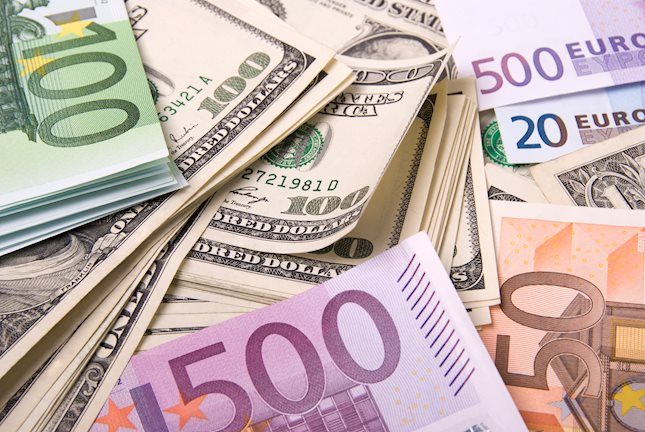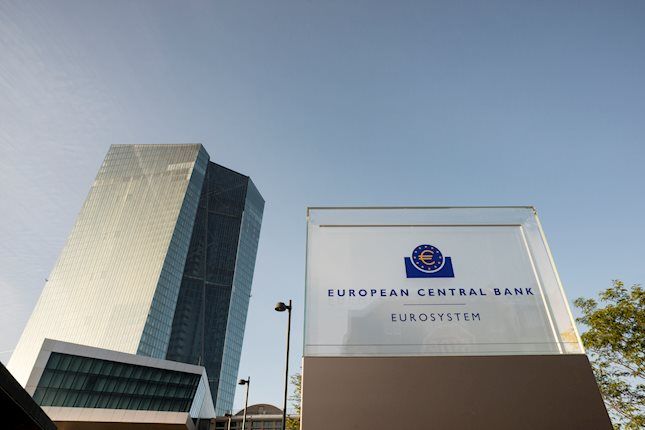- EUR/USD trades at multi-month lows near 1.0850 on Thursday.
- The European Central Bank is forecast to cut key rates by 25 basis points.
- The near-term technical outlook points to oversold conditions.
EUR/USD extended its weekly slide on Wednesday and lost nearly 0.3% on the day. The pair struggles to stage a recovery early Thursday and trades near 1.0850 as investors gear up for the European Central Bank's (ECB) monetary policy announcements.
Euro PRICE This week
The table below shows the percentage change of Euro (EUR) against listed major currencies this week. Euro was the weakest against the US Dollar.
| USD | EUR | GBP | JPY | CAD | AUD | NZD | CHF | |
|---|---|---|---|---|---|---|---|---|
| USD | 0.79% | 0.64% | 0.42% | 0.08% | 1.10% | 0.92% | 1.00% | |
| EUR | -0.79% | -0.23% | -0.47% | -0.62% | 0.34% | 0.04% | 0.12% | |
| GBP | -0.64% | 0.23% | -0.25% | -0.50% | 0.59% | 0.29% | 0.32% | |
| JPY | -0.42% | 0.47% | 0.25% | -0.33% | 0.70% | 0.55% | 0.58% | |
| CAD | -0.08% | 0.62% | 0.50% | 0.33% | 0.97% | 0.86% | 0.74% | |
| AUD | -1.10% | -0.34% | -0.59% | -0.70% | -0.97% | -0.16% | -0.13% | |
| NZD | -0.92% | -0.04% | -0.29% | -0.55% | -0.86% | 0.16% | 0.01% | |
| CHF | -1.00% | -0.12% | -0.32% | -0.58% | -0.74% | 0.13% | -0.01% |
The heat map shows percentage changes of major currencies against each other. The base currency is picked from the left column, while the quote currency is picked from the top row. For example, if you pick the Euro from the left column and move along the horizontal line to the US Dollar, the percentage change displayed in the box will represent EUR (base)/USD (quote).
The ECB is forecast to lower key rates by 25 basis points (bps) following the October meeting. This decision by itself is unlikely to trigger a market reaction, since it's already priced in. Hence, investors will pay close attention to comments from ECB President Christine Lagarde in the post-meeting press conference, starting at 12:45 GMT.
In case Lagarde downplays the soft inflation readings from the Eurozone and reiterates that they forecast price pressures to strengthen toward the end of the year, markets could see that as a sign that the ECB is unwilling to cut rates again in December. In this scenario, the immediate market reaction could help the Euro find demand. On the other hand, the currency could come under renewed pressure and open the door for another leg lower in EUR/USD if Lagarde puts more emphasis on the worsening economic outlook in the Euro area.
The US economic calendar will feature September Retail Sales and the weekly Initial Jobless Claims data. A noticeable decline in the number of first-time unemployment benefits could support the US Dollar (USD).
EUR/USD Technical Analysis
The Relative Strength Index (RSI) indicator on the 4-hour chart stays below 30, suggesting that EUR/USD is technically oversold. In case the pair stages a technical correction, 1.0900 (static level, round level) could be seen as first resistance level before 1.0950 (Fibonacci 61.8% retracement of the latest uptrend) and 1.1000 (Fibonacci 50% retracement).
Looking south, supports could be spotted at 1.0800 (round level) and 1.0780 (static level, beginning point of the uptrend).
ECB FAQs
The European Central Bank (ECB) in Frankfurt, Germany, is the reserve bank for the Eurozone. The ECB sets interest rates and manages monetary policy for the region. The ECB primary mandate is to maintain price stability, which means keeping inflation at around 2%. Its primary tool for achieving this is by raising or lowering interest rates. Relatively high interest rates will usually result in a stronger Euro and vice versa. The ECB Governing Council makes monetary policy decisions at meetings held eight times a year. Decisions are made by heads of the Eurozone national banks and six permanent members, including the President of the ECB, Christine Lagarde.
In extreme situations, the European Central Bank can enact a policy tool called Quantitative Easing. QE is the process by which the ECB prints Euros and uses them to buy assets – usually government or corporate bonds – from banks and other financial institutions. QE usually results in a weaker Euro. QE is a last resort when simply lowering interest rates is unlikely to achieve the objective of price stability. The ECB used it during the Great Financial Crisis in 2009-11, in 2015 when inflation remained stubbornly low, as well as during the covid pandemic.
Quantitative tightening (QT) is the reverse of QE. It is undertaken after QE when an economic recovery is underway and inflation starts rising. Whilst in QE the European Central Bank (ECB) purchases government and corporate bonds from financial institutions to provide them with liquidity, in QT the ECB stops buying more bonds, and stops reinvesting the principal maturing on the bonds it already holds. It is usually positive (or bullish) for the Euro.
Information on these pages contains forward-looking statements that involve risks and uncertainties. Markets and instruments profiled on this page are for informational purposes only and should not in any way come across as a recommendation to buy or sell in these assets. You should do your own thorough research before making any investment decisions. FXStreet does not in any way guarantee that this information is free from mistakes, errors, or material misstatements. It also does not guarantee that this information is of a timely nature. Investing in Open Markets involves a great deal of risk, including the loss of all or a portion of your investment, as well as emotional distress. All risks, losses and costs associated with investing, including total loss of principal, are your responsibility. The views and opinions expressed in this article are those of the authors and do not necessarily reflect the official policy or position of FXStreet nor its advertisers. The author will not be held responsible for information that is found at the end of links posted on this page.
If not otherwise explicitly mentioned in the body of the article, at the time of writing, the author has no position in any stock mentioned in this article and no business relationship with any company mentioned. The author has not received compensation for writing this article, other than from FXStreet.
FXStreet and the author do not provide personalized recommendations. The author makes no representations as to the accuracy, completeness, or suitability of this information. FXStreet and the author will not be liable for any errors, omissions or any losses, injuries or damages arising from this information and its display or use. Errors and omissions excepted.
The author and FXStreet are not registered investment advisors and nothing in this article is intended to be investment advice.
Recommended Content
Editors’ Picks

EUR/USD stays cautious near 1.0850, as ECB rate decision looms
EUR/USD trades with caution near 1.0850 in the European session on Thursday. The recent US Dollar strength and a softer risk tone weigh on the pair. Meanwhile, the Euro remains vulnerable ahead of the ECB policy announcements.

GBP/USD treads water below 1.3000 amid cautious mood
GBP/USD consolidates Wednesday’s softer UK CPI-inspired fall below 1.3000. Bets for a BoE rate cut in November weigh on the pair amid the sustained US Dollar strength. Hopes for a less aggressive Fed policy easing favor the USD bulls ahead of the US Retail Sales data.

Gold price bulls retain control near record high, looks to US data for fresh impetus
Gold price prolongs its one-week-old uptrend for the third straight day and touches a fresh all-time peak, around the $2,685-2,686 region during the early European session on Thursday.

European Central Bank set to trim interest rates again as economic outlook worsens
The European Central Bank is expected to cut benchmark interest rates by 25 bps at the October policy meeting. ECB President Christine Lagarde’s presser will be closely scrutinized for fresh policy cues.

Another unconvincing policy briefing fails to inspire confidence
Chinese authorities are playing the long game, trying to keep investors focused on the bigger picture, multiple stimulus measures spread out over time, with a bit of subtle bid support from state-backed institutions.

Best Forex Brokers with Low Spreads
VERIFIED Low spreads are crucial for reducing trading costs. Explore top Forex brokers offering competitive spreads and high leverage. Compare options for EUR/USD, GBP/USD, USD/JPY, and Gold.
